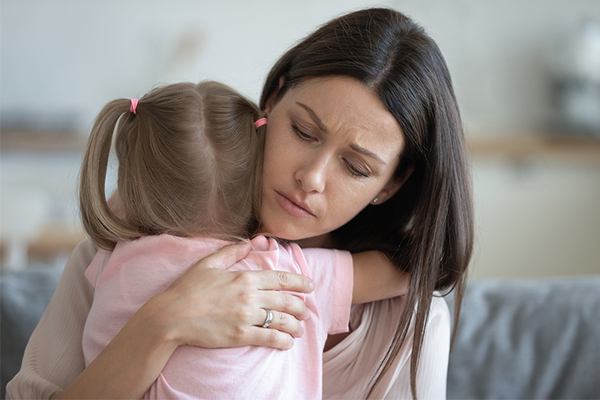While we probably don’t need the research to tell us this, experts say they’re already seeing that children going through the COVID-19 pandemic are clearly experiencing more stress and anxiety.
“While we don’t have the full statistics yet, this is something we should be paying attention to,” said Dr. Alex Mabe, a child psychologist at the Children’s Hospital of Georgia. “It’s not only the impact from fear of illness but also change in routines, like no longer being in school or having face-to-face contact with friends or the community.”
Most of us can recognize the usual signs of stress and anxiety, like crying, being upset or asking lots of questions. But there can also be not-so-typical signs, like if children:
- Are quieter than usual
- Have a major change in how they sleep
- Have a change in how much they’re eating
- Have more tantrums or being defiant
- Are more clingy or acting younger than their age
“Knowing how to talk to your children about what’s going on is important,” said Mabe. “But there’s also more to helping children than just talking.”
Here’s What You Can Say
Feeling afraid of what’s going to happen can be a major source of stress for any of us: How long is COVID-19 going to go on, are grandparents safe, and is this coming back are questions we all have.
“So as a parent, the first thing for us is to know the facts,” said Mabe. “What’s out there is changing, but we want to be as accurate and reliable as we can be.”
When talking to children, it’s also important for parents to be calm and not to show their own anxiety, which can be even more distressing to a kid. “Your response to the situation is every bit as important as the words you say,” said Mabe.
Some parents may think it’s better to keep information from children so that they won’t worry or be anxious. But, said Mabe, the exact opposite can happen. “What we know is that when important information is withheld, the likelihood is that increases their stress, since as human beings, when we don’t know what exactly is going to happen, we tend to think the worst. After all, children are probably going to catch snippets on the news or hear about it from other sources. So it’s better to be open and honest, and it’s better for it to come from a parent.”
Here’s a good approach:
- Give your child the chance to ask questions. But, know that while some children will ask a lot of questions and want a lot of reassurance, other kids will react by getting very quiet. In either case, you want to give your child a basic understanding of what’s happening and encourage questions, if your child isn’t asking.
- Make sure that what you’re saying is developmentally appropriate and not so complex that it’s going to stress him or her further. For example, a four-year-old is only going to have a very fuzzy understanding of death, so it’s probably best to avoid the D-word. But an eight-year-old will likely have a general idea about death and may worry about loved ones. “If you decide to talk about the risk of people getting so sick that they die, it is important to reassure your child that the numbers who die are very small,” said Mabe. “Also, it would be helpful to help the child understand that some people, such as grandparents, have a greater risk of getting very sick, so that’s why we’re being extra careful with them.”
- Use a three-question approach. Since many of us tend to worry about the worst, bring it into the open. Ask your child what’s the worst thing that they think could happen in this situation; what’s the best thing that could happen; and what’s the most likely thing to happen. “That last question helps correct any misunderstanding of the probability of bad outcomes,” said Mabe.
- Finally, help them figure out something they can do to help. What’s hardest in any situation is if we feel as though there’s nothing we can do to make it better. “So we want to help kids to be active in coping, not passive,” said Mabe. For example, talk about how they can play a part in helping the family stay safe, like helping to make a mask or figuring out what groceries they need while social distancing.
Here’s What Else You Can Do
One of the major stresses during this time of social distancing is the major upheaval in routines—all those things like sports or school or church that make children feel comfortable and safe, said Mabe.
So, parents can help reestablish as much normalcy in routines as they can. For example, if you’re used to going to events then eating out every weekend, figure out outdoor spaces you can visit as a family, then play restaurant at home by ordering in a meal from a favorite spot.
While we have to be more flexible these days about screen time—since school and our social life are all on Zoom or other communication tools—do try to limit how much news that the whole family is watching. Also aim for at least 40 to 60 minutes of total exercise every day, whether that’s climbing on your backyard playset, taking a walk or running around the house.
There’s also a bright spot in all this. “We can all as a society agree that this time has been very difficult,” said Mabe. “As much as we want to protect children from the stress around this issue, we should encourage them as part of our family and as part of our society to recognize that this is a challenge for them to overcome. This is not something where we have to be passive victims, but we can all work together and we can get through this. Optimism—even though the challenges are difficult—needs to be conveyed to our kids.”




